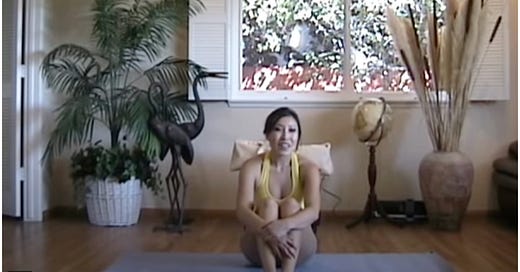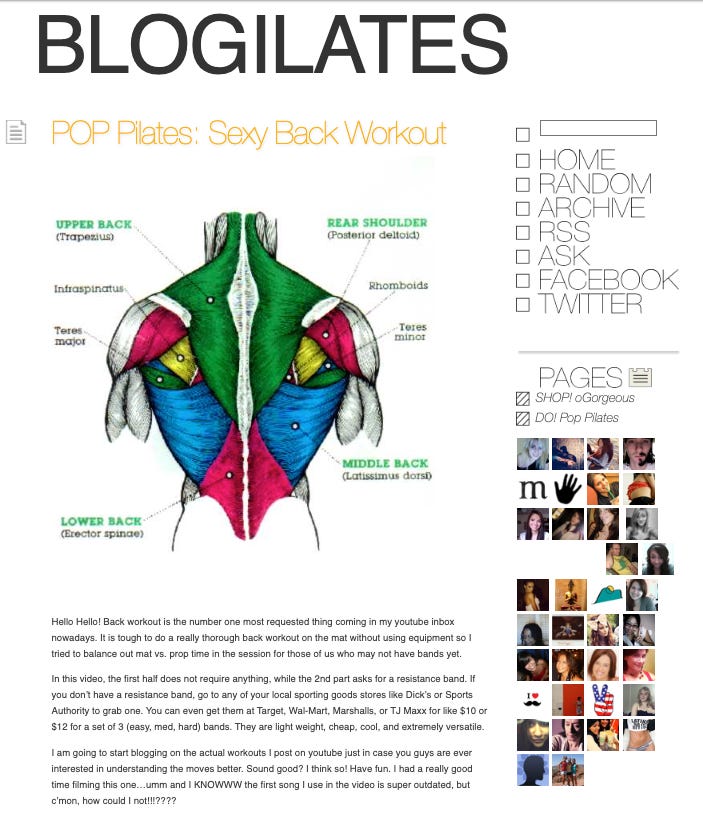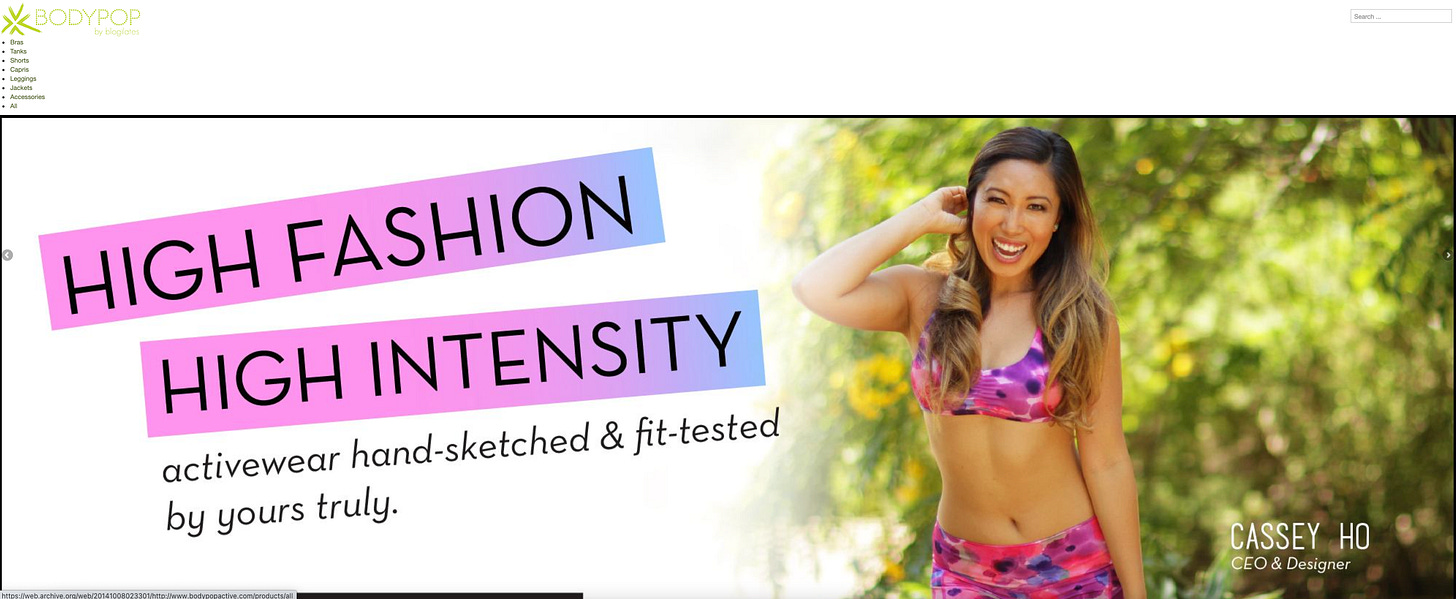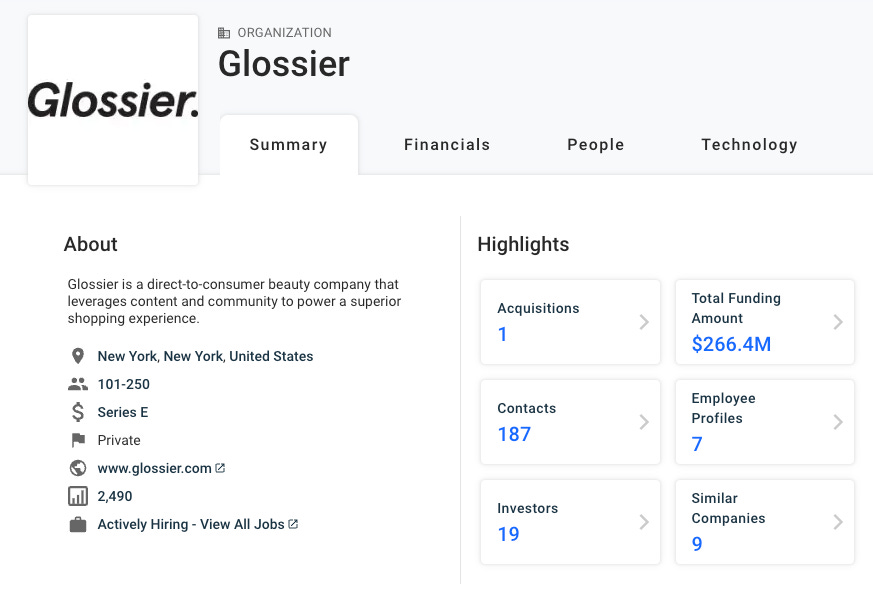How OG YouTuber Cassey Ho Went from Fitness Creator to Serial Multimillionaire — Part 1
Part of my ultimate guide series on how today’s creators are building product empires
Hey, Ashley here. Each week I tackle topics related to starting and growing creator-owned products/companies from where I sit at the intersection of Silicon Valley and the creator economy.
Long before Prime, Chamberlain Coffee or Feastables became the creator economy's latest obsession; fitness YouTuber Cassey Ho had been hard at work building her multimillion-dollar empire, which includes not one but two fast-growing eight-figure brands.
Considering how many creators aspire to create a product-based empire, I am shocked at how little has been written on these creators as entrepreneurs, let alone anything actionable for creators starting (or thinking of starting product lines and brands).
So, how did Cassey build two $10M+ (and growing) companies off the power of her YouTube audience?
Here's a sneak peek at some interesting takeaways from Cassey’s journey:
1. She always co-creates new products with her audience.
2. She runs a highly lean business (only 21 full-time employees as of April 2023).
3. She's come full circle. An aspiring designer as a kid, she went pre-med at college.
4. She knew she was onto something when she sold 30,000 water bottles in 1 month.
5. She hasn’t posted a fitness-related YouTube video in over a year.
6. She's a risk taker. She shut down one business because she lost interest in it.
To write this, I spent days scouring the internet and listening to Cassey's interviews. I won't re-iterate her whole life story here, but it's a great one, and I highly recommend listening to her How I Built This podcast with Guy Raz or her sit-down at her home with Colin and Samir for more context. In Part 2, I’ll provide a full list of sources.
Let me know your thoughts in the comments as I continue evolving this study. Please note that copying anyone else's playbook line-by-line or replicating their strategy exactly won't guarantee success.
The Humble Beginnings of Cassey Ho’s Wellness Empire
Cassey Ho (now 36) posted her first YouTube video in 2009 using the Blogilates moniker, and she would eventually reach almost 9 million subscribers on YouTube alone. She posted that first YouTube for just 40 of her former Pilates students (who loved her unique Pop Pilates-themed workouts).
Cassey discovered months later that the one video had earned 1000s of views and 100s of positive comments with no effort. This was when she started to take online content creation seriously.
Next, she launched the Blogilates website in 2010 to write long-form content to connect with her audience better. Two years after posting that first YouTube video, she sold her first offline product — branded ribbed Blogilates t-shirts she picked up from Forever 21 and screen-printed at home (spoiler alert: they sold out within minutes).
It wasn't until 2012 that the Blogilates business empire started to take shape. By now, Cassey had around 166 000 YouTube subscribers. By the end of the year, Cassey released her first full product line —apparel and Pilates equipment. She sold DTC ("direct-to-consumer") exclusively on her Blogilates website.
From 2012 to 2014, Blogilates' revenue expanded rapidly, with several products going viral. Yet, in a surprising twist, Cassey shut down the Blogilates product line sometime between 2014 and 2015. Why? She mentioned outgrowing the popular colourful, quote-based aesthetic.
Ultimately, though, Blogilates products were revived in 2020 after Cassey secured an exclusive licensing deal with Target, who agreed to manufacture and sell the products.
By 2015, her YouTube following had grown to 2.5 million. Cassey then negotiated a significant licensing deal with 24-Hour Fitness to host her signature Pop Pilates branded classes at their gyms. In an interesting turn of fate, 24-Hour Fitness is also the gym chain that used to pay her only $20 per class as a local instructor a mere six years before.
The Blogilates’ Empire’s Adolescent Years
2016 ended up being a landmark year for Cassey's budding empire. Not only did T-Swift make it known she was a Blogilates superfan, Cassey’s second company, the technical athleisure company, Popflex, launched into the world. The launch of Popflex marked the first time Cassey experimented with a brand name other than Blogilates (spoiler alert: it was a very successful experiment).
If we fast-forward to 2022, Cassey shared that both companies — Blogilates and Popflex — were doing at least $10 million in annual sales and on track for significant revenue growth.
Particularly remarkable is that she launched two $10M+ companies with zero investor money — a feat unheard of for almost any DTC company doing $10M+ in annual revenue (True Classic being another exception).
Most other popular DTC brands of the same era (such as Glossier and Hims) used the same standard Silicon Valley playbook, which meant raising tens of millions in venture capital investor money. I don't think I can underscore enough just how special it is that Cassey built two companies from nothing to eight figures with zero investor dollars.
So far, I have focused on the success of her IRL products. But she’s also been successful with digital products too. Cassey has sold countless information products, from online courses (her Pop Pilates instructor certification for $299) to cookbooks, journals, and a freemium fitness app, Body by Blogilates (with over 2,500 reviews on the Apple app store), since 2013.
While I have yet to see any public data points on digital/information product sales, she mentioned on How I Built This that a single ebook launched outperformed her entire Random House publishing deal (you can find her Random House published book here). It appears she has published at least five books over the course of her career as a creator, both as ebooks and physical books, culminating in thousands of reviews on Amazon.
Continuing to Build Her Legacy
As of 2023, oGorgeous Inc. (the holding company or “holdco”) for Cassey’s companies (including both Blogilates and Popflex) is likely doing a minimum of $20 million in annual revenue based on publically-available information (Note: My guess is that Cassey may be closer to $100 million in yearly revenue. More on that in Part 2 of this series).
We know Cassey didn't take any investor money, which is known as bootstrapping in Silicon Valley.
But how did she fund the launch of two eight-figure brands?
Since her holding company is privately held and not subject to public company disclosure requirements, we don't know how much debt she has, if any. That said, it seems reasonably apparent Cassey evoked the increasingly popular content-as-the-cash-cow playbook — using her content income (ads and brand deals) as the cash to fund her two eight-figure plus companies.
In April 2023 (although the actual interview was likely filmed months earlier), Cassey told Colin and Samir that they have only 21 full-time employees ("FTEs”), but hiring was growing rapidly — a strong sign of more revenue growth. Only a year earlier, she told Guy Raz she had only 12 FTEs and 30-40 contractors. In comparison, a typical Silicon Valley (“SV”) company with similar revenue to Cassey’s would typically employ at least double, if not triple, or quadruple, the number of FTEs.
Blogilates’ need to hire fewer FTEs per million in revenue drastically increases their profit margin compared to MBA-led or SV-led consumer product companies, as creator-led companies spend significantly less on marketing because of the power of their audience.
Even conservatively, assuming the Holdco is doing $30 million in revenue, her revenue per employee (a key business efficiency metric) is well over a million per employee — far above the industry standard.
In Part 2 of this series (next week!), we'll dive deeper into the tactical and actionable learnings from Cassey’s evolution from creator to CEO of two uber-successful companies.
Why YouTube ads & brand deals only make up 1% of Cassey’s total revenue
How Cassey balances her creator and entrepreneur hats
Her exact method of co-creating viral products with her audience
How Cassey successfully stopped making her signature content
When and why she decided to explore wholesale
How to make your audience your superpower to outcompete in today's market
Why Cassey’s long been cautious about brand deals
How to think about content-product fit for product success
What makes creator-founder brands more resilient
Explaining why I think Cassey may be closing in on $100 million in revenue in 2023












